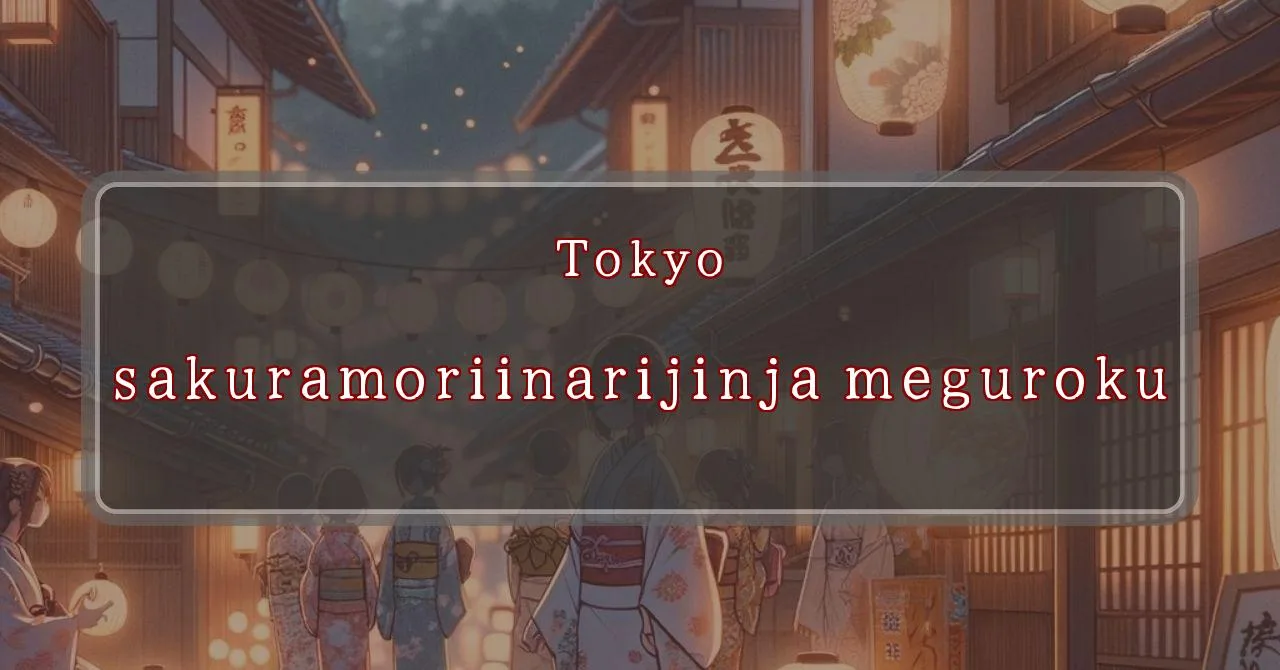Sakuramori Shrine: A Hidden Gem in Meguro
Basic Information
Nestled in the heart of Meguro, Sakuramori Shrine stands as a testament to the rich cultural heritage of Japan. Its origins shrouded in the mists of time, the shrine is believed to have been established during the Kamakura period, its sacred grounds echoing with centuries of prayers and traditions.
- Address: 1-16-10 Hiramachi, Meguro-ku, Tokyo
- Phone Number: 03-3717-7720
- Access: A short walk from Todaimae Station on the Tokyu Oimachi Line
- Festival Days: September 1st Sunday, 2024
Main Events and Attractions of the Festival
The Sakuramori Shrine Festival is a vibrant celebration of Japanese culture and traditions, featuring a variety of events and attractions that captivate visitors of all ages.
Mikoshi Procession
The highlight of the festival is the Mikoshi Procession, where a portable shrine, or mikoshi, is paraded through the streets of Meguro. The mikoshi is believed to carry the spirit of the enshrined deity, and participants take turns carrying it, creating a lively and energetic atmosphere.
Traditional Performances
The festival also features a variety of traditional Japanese performances, including Kagura, a sacred Shinto dance, and Taiko drumming. These performances showcase the rich cultural heritage of Japan and provide a glimpse into the country’s ancient traditions.
Food and Market Stalls
No Japanese festival is complete without delicious food and market stalls. At the Sakuramori Shrine Festival, visitors can indulge in a wide array of traditional Japanese dishes, from yakitori and takoyaki to okonomiyaki and taiyaki. There are also stalls selling souvenirs and local crafts, making it a great place to find unique gifts and mementos.
Fireworks Display
The festival culminates in a spectacular fireworks display that lights up the night sky over Meguro. The fireworks are synchronized to music, creating a mesmerizing show that leaves visitors in awe.
Blessings and Deities
Sakuramori Shrine is dedicated to Inari Okami, the Shinto deity of rice, sake, tea, fertility, and general prosperity. Inari Okami is one of the most popular and widely worshipped deities in Japan, and Sakuramori Shrine is a popular destination for those seeking blessings in these areas.
- Inari Okami: Deity of rice, sake, tea, fertility, and general prosperity
- Popular for blessings in business, agriculture, and household prosperity
- Also worshipped as a guardian deity of the local community
Origin and History
The exact origins of Sakuramori Shrine are unknown, but it is believed to have been established during the Kamakura period (1185-1333). The shrine was originally located in a different part of Meguro, but it was moved to its current location in 1659.
- Established during the Kamakura period (1185-1333)
- Originally located in a different part of Meguro
- Moved to its current location in 1659
- Rebuilt several times over the centuries, most recently in 1935
Tips and Notes for Visitors
Here are some tips and notes for visitors to Sakuramori Shrine:
- The shrine is open daily from 9am to 5pm.
- Admission is free.
- The festival is held on September 1st Sunday every year.
- During the festival, there is a Mikoshi Procession, traditional performances, food and market stalls, and a fireworks display.
- The shrine is a popular destination for weddings and other ceremonies.
Parking Information
There is no parking lot at Sakuramori Shrine, but there are several public parking lots nearby.
- Meguro Central Park Parking Lot: 5-minute walk from the shrine
- Meguro Gajoen Parking Lot: 10-minute walk from the shrine
- Meguro Ward Office Parking Lot: 15-minute walk from the shrine
Popular Stalls and Food Carts in Recent Years
| Type of Stall | Description |
|---|---|
| Takoyaki | A staple at Japanese festivals. Characterized by a crispy outside and a creamy inside. |
| Jaga Butter | A simple yet popular snack of hot potatoes lavishly topped with melted butter. |
| Baby Castella | Small castella cakes, sweet and fluffy treats enjoyed by children and adults alike. |
| Grilled Ayu with Salt | Fresh ayu fish grilled whole with salt, a savory taste of Japanese summer. |
| Shaapin | A unique gourmet item influenced by foreign cuisine, with a chewy skin wrapping the filling. |
| Okonomiyaki | A Japanese grilled dish where you often choose your own ingredients for a personalized flavor. |
| Cotton Candy | A fluffy, sweet snack that’s extremely popular with children. |
| Chocolate Banana | A banana coated in chocolate, a fun and visually appealing dessert. |
| Kushiyaki | Various types of ingredients skewered and grilled, an easy-to-enjoy snack. |
| Yakisoba | Fried noodles mixed with a special sauce, a fast food favorite in Japan. |



